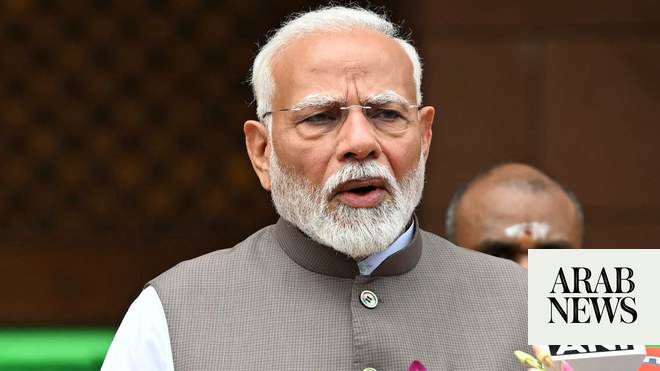NEW DELHI: Indian Prime Minister Narendra Modi's first post-election budget on Tuesday will aim to outline an economic vision that balances fiscal prudence with the expectations of disaffected voters and demands from his coalition partners.
“This budget will set the direction of our work for the next five years and it will lay the foundation for achieving our goal of making India a developed country by 2047,” Modi said on Monday ahead of the budget to be presented by Finance. Minister Nirmala Sitharaman.
Modi's Hindu nationalist Bharatiya Janata Party (BJP) failed to win a majority in last month's election, leaving it dependent on allies to form a government for the first time since he came to power more than a decade ago.
The budget is expected to cut taxes for the middle class, provide aid to distressed rural areas and meet demands from two key coalition partners — the Telugu Desam Party in Andhra Pradesh and the Janata Dal (United) in Bihar — for additional funding. billions of dollars for their regions.
“Weak political capital, uneven growth with low consumption and a lack of energy in private investment and the rural sector set the backdrop for the upcoming budget,” said Madhavi Arora, economist at Emkay.
The government will also seek to keep at bay a resurgent opposition that has criticized the Modi government for a lack of jobs, the high cost of living and rising income inequality.
According to a report by the Global Inequality Lab, the wealth concentrated in the richest 1 percent of India's population has reached its highest level in six decades, while youth unemployment is above 17 percent, according to government estimates.
INFRASTRUCTURE COSTS
A government report released on Monday projected economic growth in the current fiscal year at between 6.5 percent and 7 percent, slightly below analysts' consensus estimates.
The government, however, has enough support from the central bank to ensure it stays on course to narrow the budget gap and finance its infrastructure projects.
In May, the Reserve Bank of India transferred a $25 billion surplus to the government, which will help it cover tax cuts, rural aid and coalition partners' demands for regional funding.
The government has nearly doubled spending on long-term infrastructure projects over the past three years as a way to boost growth and create jobs, and plans to spend 11 trillion rupees ($131.51 billion) on such projects this year.
Some economists expect the budget could include improvements to the incentive scheme for domestic and foreign companies to increase production in India in 14 sectors, including electronics, semiconductors and pharmaceuticals.
On Monday, a government economic survey warned of increased risks from a rising stock market, which is also drawing retail investors into risky derivatives trading.
To discourage such risky investments, economists say the budget could include measures such as an increase in capital gains tax on long-term equity investments. However, according to Morgan Stanley, such a move could be a major drag on Indian stocks and hit the stock market.
Any increase in the derivative transaction tax would also be a negative surprise, Jeffries said.
Finance Minister Sitharaman is due to present the budget at 05:30 GMT.
